Landfill Gas Power Plants should be installed at all landfills, where the landfill gas (LFG) extraction rate is large enough to sustain a steady flow for long periods (multiple years). A typical Landfill Gas Power Plant for most landfill sites is an internal combustion engine, or possibly a gas turbine. The typical landfill gas power plant is used to produce electricity to sell commercially, or for use on site.
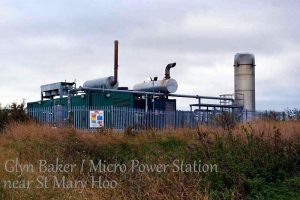 A basic landfill gas power plant skid includes a knock-out drum to remove moisture, blowers to provide a vacuum to “pull” the gas and pressure to convey the gas, and a flare. System operators monitor parameters to maximize system efficiency.
A basic landfill gas power plant skid includes a knock-out drum to remove moisture, blowers to provide a vacuum to “pull” the gas and pressure to convey the gas, and a flare. System operators monitor parameters to maximize system efficiency.
Using LFG in an energy recovery system usually requires some treatment of the gas to remove excess moisture, particulates and other impurities. The type and extent of treatment depend on site-specific LFG characteristics and the type of energy recovery system. Some end uses, such as pipeline injection or vehicle fuel projects, will require additional cleaning and compression of the LFG. via epa.gov
Landfill Gas Power Plant Types
More than 70 percent of all landfill electricity projects use reciprocating piston (RP) internal combustion engines to form their landfill gas power plants. The RP is a form of internal combustion engine often seen on landfills. They are chosen because of relatively low cost, high efficiency, and the available models are a good size match for most landfills. The remainder are gas turbines in two forms “Turbines” for the larger landfills with high LFG yields, and “Microturbines” for smaller landfills.
It is anticipated that at some time in the future landfill gas (biogas) will be burnt at higher efficiencies than internal combustion engines can achieve, in fuel cells. However, the author of this article does not know of any such use of biogas fuel cells to date.
In the next paragraph we provide further details about the above three types of landfill gas power plant. These are listed as Internal Combustion Engines with the following design variations:
- Reciprocating Piston (RP)
- Gas Turbine, and
- Microturbine.
Reciprocating Piston (RP) Internal Combustion Engines
RP engines usually achieve an efficiency of 25 to 35 percent with landfill gas. However, RP engines can be added or removed to follow gas trends. Each engine can achieve 150kW to 3 MW, depending on the gas flow.
An RP engine (less than 1 MW) can typically cost $2,300 per kW with annual operation and maintenance costs of $210 per kW. An RP engine (greater than 800 kW) can typically cost $1,700 per kW with annual operation and maintenance costs of $180 per kW. Estimates are in 2010 dollars.
Gas Turbine Internal Combustion Engines
Gas turbines, another form of internal combustion engine, usually meet an efficiency of 20 to 28 percent at full load with landfill gas. Efficiencies drop when the turbine is operating at partial load. Gas turbines have relatively low maintenance costs and nitrogen oxide emissions when compared to RP engines. Gas turbines require high gas compression, which uses more electricity to compress, therefore reducing the efficiency.
Gas turbines are also more resistant to corrosive damage than RP engines. Gas turbines need a minimum of 1,300 cfm and typically exceed 2,100 cfm and can generate 1 to 10 MW. A gas turbine (greater than 3 MW) can typically cost $1,400 per kW with annual operation and maintenance costs of $130 per kW. Estimates are in 2010 dollars.
Microturbines
Microturbines can produce electricity with lower amounts of landfill gas than gas turbines or RP engines. Microturbines can operate between 20 and 200 cfm and emit less nitrogen oxides than RP engines. Also, they can function with less methane content (as little as 35 percent). Microturbines require extensive gas treatment and come in sizes of 30, 70, and 250 kW.
A microturbine (less than 1 MW) can typically cost $5,500 per kW with annual operation and maintenance costs of $380 per kW. Estimates are in 2010 dollars.
Biogas Fuel Cells
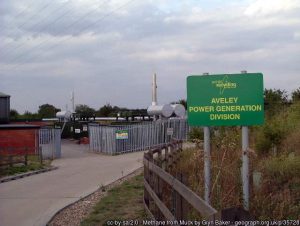 Research has been performed indicating that molten carbonate fuel cells could be fueled by landfill gas. Molten carbonate fuel cells require less purity than typical fuel cells, but still require extensive treatment. The separation of acid gases (HCl, HF, and SO2), VOC oxidation (H2S removal) and siloxane removal are required for molten carbonate fuel cells. Fuel cells are typically run on hydrogen and hydrogen can be produced from landfill gas.
Research has been performed indicating that molten carbonate fuel cells could be fueled by landfill gas. Molten carbonate fuel cells require less purity than typical fuel cells, but still require extensive treatment. The separation of acid gases (HCl, HF, and SO2), VOC oxidation (H2S removal) and siloxane removal are required for molten carbonate fuel cells. Fuel cells are typically run on hydrogen and hydrogen can be produced from landfill gas.
Various landfill gas project incentives exist for United States projects at the federal and state level. The Department of the Treasury, Department of Energy, Department of Agriculture, and Department of Commerce all provide federal incentives for landfill gas projects. Typically, incentives are in the form of tax credits, bonds, or grants. For example, the Renewable Electricity Production Tax Credit (PTC) gives a corporate tax credit of 1.1 cents per kWh for landfill projects above 150 kW. Various states and private foundations give incentives to landfill gas projects. Methane from Muck
cc-by-sa/2.0 – © Glyn Baker – geograph.org.uk/p/35728 via wikipedia.org
What Happens Inside a Landfill Gas Power Plant
A landfill gas power plant burns a waste, “methane” that would otherwise be released into the atmosphere or burned off in a flaring process. Methane is a highly potent agent of global climate change, having about 23 times the negative impact on a pound-by-pound basis as CO2. Landfill gas combustion produces some CO2, but the impact of these emissions on global climate change is offset many times over by the methane emission reductions.
Landfill Gas Power Plant Opportunities in the US
While new EPA regulations require gathering and flaring of methane from large landfill operations, small landfills, which fall outside the federal agency's jurisdiction, may amount to as much as 40 percent of the methane generated by landfills nationwide.
Landfill gas generators produce nitrogen oxides emissions that vary widely from one site to another, depending on the type of generator and the extent to which steps have been taken to minimize such emissions. Combustion of landfill gas can also result in the release of organic compounds and trace amounts of toxic materials, including mercury and dioxins, although such releases are at levels lower than if the landfill gas is flared. via powerscorecard.org
EPA data (in MW) from March 2015 show which technologies the nation's 2.28 GW of landfill gas to energy projects (operational, planned, or shut down) have picked to convert landfill gas to power. Projects under construction and that are planned to date only plan to use reciprocating engines.
Leading landfill gas power plant vendors among the reciprocating engine set include Caterpillar and GE Jenbacher, and Clarke-Energy. Combined cycle and gas turbine users mostly pick Caterpillar subsidiary Solar Turbine's Mars, Centaur, Mercury, Taurus, or Saturn generators, though larger projects like the 23.5-MW Arbor Hills Landfill in Michigan uses a Siemens gas turbine. Choices among microturbine users vary between Ingersoll-Rand and Capstone, the data suggests.
Landfill Gas Power Plants – Concluding Remarks
In 2005, 166 million tons of MSW were discarded in landfills in the United States. Quantities have only risen since, so the climate change impacts of this, which can be much reduced by installing landfill gas power plants, are significant.
Roughly 120 kg of methane is generated from every ton of MSW. Methane has a global warming potential of 23 times more effective as a greenhouse gas than carbon dioxide on a 100-year time horizon. It is estimated that more than 10% of all global anthropogenic methane emissions are from landfills. Landfill gas projects help aid in the reduction of methane emissions. However, landfill gas collection systems do not collect all the gas generated.
Of the 2,300 landfills in the United States have operational landfill gas utilisation projects as of 2007. LMOP has estimated that approximately 520 landfills that currently exist could use landfill gas (enough to power 700,000 homes). Landfill gas projects also decrease local pollution and create jobs, revenues and cost savings. Of the roughly 450 landfill gas projects operational in 2007, 11 billion kWh of electricity was generated and 78 billion cubic feet of gas were supplied to end users.
We hope you found our article informative on the subject of landfill gas power plants. However, the ebooks on offer below go into far more depth on this subject.
New for Summer 2025! For LFG Utilisation Professionals!
Discover how landfill operators and engineers turn landfill methane capture and utilisation regulations into profitable, compliant renewable energy projects.
This is an in-depth and updated version of this article for serious landfill and energy from waste professionals.
Find Out More: Comes with Bonus “LFG Project Pitfalls” Ebook
Check Out Our Comprehensive Siloxane Removal Ebook:
 For a much more in-depth report on all aspects of Siloxane corrosion solutions, check out our comprehensive ebook below and:
For a much more in-depth report on all aspects of Siloxane corrosion solutions, check out our comprehensive ebook below and:
- Unlock actionable strategies, cost-saving techniques, and real-world case studies for effective siloxane removal in your biogas and EfW projects.
- Gain expert insights that boost efficiency, extend equipment life, and minimize maintenance costs.
[First published Jan 7, 2019. Ebook added August 6, 2025.]
Best Enclosed Landfill Gas Flare Stack Suppliers & Manufacturers
Enclosed landfill gas flares are crucial for sustainable waste management, offering up to 99.9% methane destruction. Top suppliers like John Zink and Zeeco provide advanced systems with features minimizing emissions. Compliance is easier with these solutions, ensuring effective gas management and environmental protection…
Low Calorie Gas Flares for Old Landfills
Managing emissions from ageing landfills is challenging due to low methane levels. Low calorie gas flares use air-mixing technology to ensure consistent combustion, reducing greenhouse gases. Compact and effective, these flares provide a sustainable solution for sites with declining gas production, addressing odour issues and regulatory needs…
Landfill Gas Composition Analysis & Trace Chemical Breakdown
Landfill gas primarily consists of methane and carbon dioxide, but also contains trace volatile organic compounds that pose risks. From environmental monitoring to energy recovery, understanding landfill gas composition is essential. This analysis helps navigate concerns arising from waste decomposition over time and landfill design factors…
Is Your Landfill Site Ready? Assessing When to Install Gas Flares & Landfill EfW Systems
The urgency for compliance with the COP29 methane pledge means waste managers must act immediately. Gas flares are mandatory for low volumes, while EfW systems transform hazards into valuable energy. Install EfW when LFG is significant and steady to secure compliance and profits ahead of deadlines…

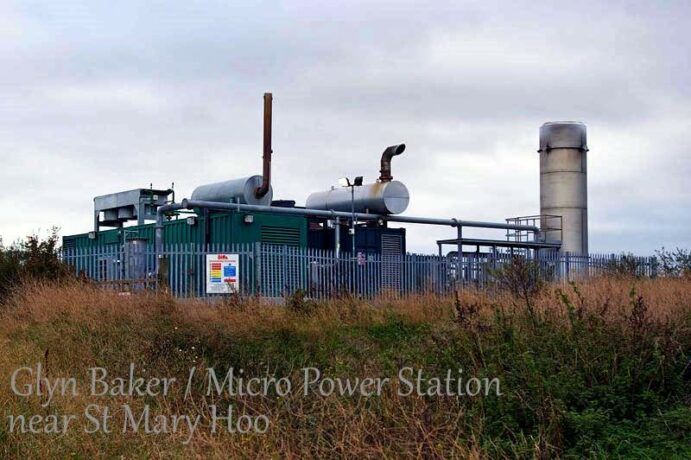
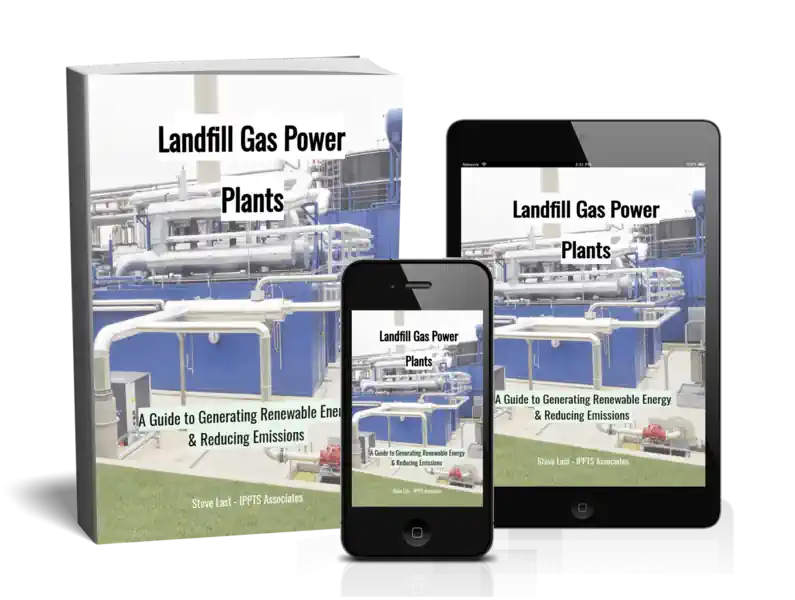

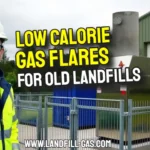
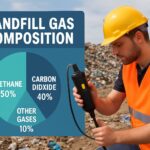

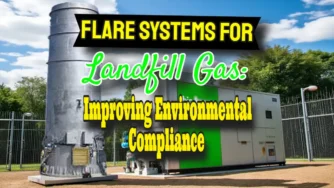


As I website-hopped about, I found a lot of interesting information, so I bookmarked it to my favourites. (:.